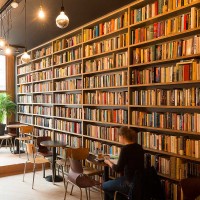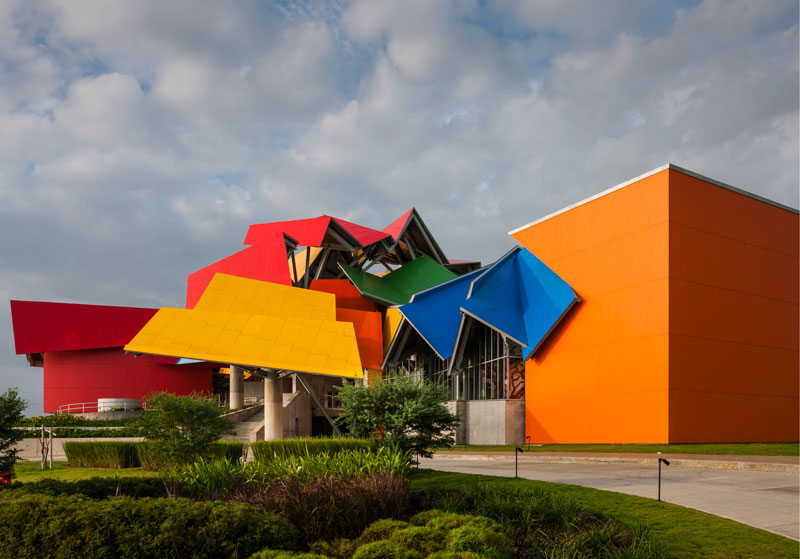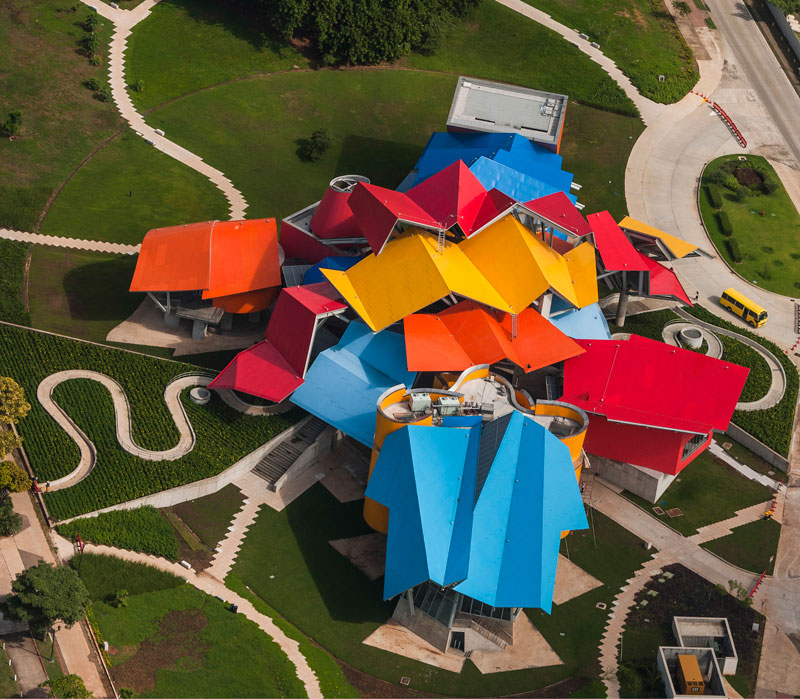
The thousand stories of Le Bal Infernal – used book café
10 December 2015
18 March 2015
A few months ago, following 10 years of work, the BioMuseo in Panama was opened to the public. The colourful building, overlooking the Pacific Ocean, is signed by Frank O. Gehry. The deconstructivist characteristic of the Maestro is certainly recognizable in the non-geometry of the architecture, an asymmetric volume which houses over 4,000 square metres of exhibition space, divided into eight galleries.
The BioMuseo is an international centre for the study of natural history and, through its reconstructions, aquariums and permanent collections, recounts how the Isthmus of Panama has been a fundamental node in the formation of the local environment and of its biodiversity as we know it today.



That strip of land, in fact, divided the Pacific Ocean from the Atlantic (joined by the Canal in the early twentieth century), favouring the formation of completely different underwater worlds, while joining the north and south of the American continent, allowing many species – both animals and plants – to colonize the area with the greatest freedom.
The interior rooms have great scientific rigor, but the spectacular exhibit solutions designed by Bruce Mau attract to the BioMuseo not only scholars, but also (and especially) the curious and enthusiasts of all ages. The project is complemented by an extensive botanic garden, called the Biodiversity Park, which surrounds the building .Here are housed collections of native plants and flowers from all over the country.



WHERE: Building 136, Amador Causeway Apartado 0843-02931, Panama
A few months ago, following 10 years of work, the BioMuseo in Panama was opened to the public. The colourful building, overlooking the Pacific Ocean, is signed by Frank O. Gehry. The deconstructivist characteristic of the Maestro is certainly recognizable in the non-geometry of the architecture, an asymmetric volume which houses over 4,000 square metres of exhibition space, divided into eight galleries.
The BioMuseo is an international centre for the study of natural history and, through its reconstructions, aquariums and permanent collections, recounts how the Isthmus of Panama has been a fundamental node in the formation of the local environment and of its biodiversity as we know it today.
That strip of land, in fact, divided the Pacific Ocean from the Atlantic (joined by the Canal in the early twentieth century), favouring the formation of completely different underwater worlds, while joining the north and south of the American continent, allowing many species – both animals and plants – to colonize the area with the greatest freedom.
The interior rooms have great scientific rigor, but the spectacular exhibit solutions designed by Bruce Mau attract to the BioMuseo not only scholars, but also (and especially) the curious and enthusiasts of all ages. The project is complemented by an extensive botanic garden, called the Biodiversity Park, which surrounds the building .Here are housed collections of native plants and flowers from all over the country.
WHERE: Building 136, Amador Causeway Apartado 0843-02931, Panama



The Moodboarders is a glance into the design world, which, in all of its facets, captures the extraordinary even within the routine. It is a measure of the times. It is an antenna sensitive enough to pick-up on budding trends, emerging talents and neglected aesthetics. Instead of essays, we use brief tales to tune into the rhythm of our world. We travelled for a year without stopping, and seeing as the memory of this journey has not faded, we have chosen to edit a printed copy. We eliminated anything episodic, ephemeral or fading, maintaining a variety of articles that flow, without losing the element of surprise, the events caught taking place, and the creations having just bloomed.